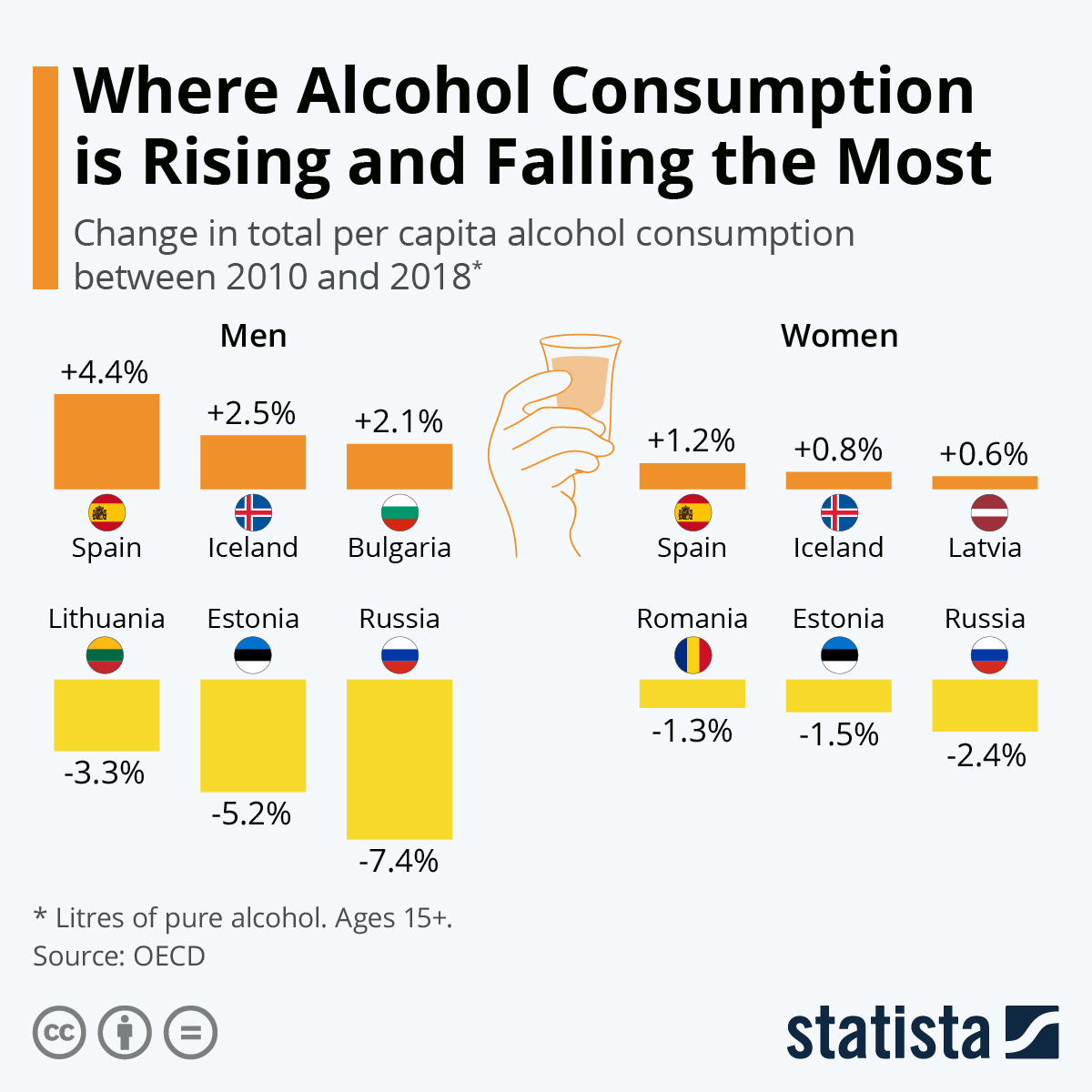Russia isn't alone in recording a downward trend, either. Of the 55 countries and regions included in the report, the majority (33 for men, 31 for women) registered decreased alcohol consumption when measuring the litres of pure alcohol taken on board by the average person in each year. Bucking this trend though are a number of countries. Spain has done so to the largest extent as our infographic shows, with increases of 4.4 and 1.2 percent for men and women, respectively.
As described by the OECD, the consumption of alcohol is a staple of many societies and "can be a source of individual pleasure and social enjoyment", while the industry "represent(s) an important part of the economy in many countries". The report, entitled "Preventing Harmful Alcohol Use", warns though that "the harmful alcohol consumption is a leading risk factor for premature mortality, injuries and many non-communicable diseases such as cancer, liver cirrhosis and injuries. These, in turn, have wider detrimental societal consequences."
 поразительно, так и помереть можна
поразительно, так и помереть можна
1 comment:
Preventing Harmful Alcohol Use
One in three adults has engaged in binge drinking at least once in the previous month, and one in five teenagers has experienced drunkenness by age 15. Harmful patterns of alcohol consumption have far-reaching consequences for individuals, society and the economy. Using microsimulation modelling, this book analyses the cost of alcohol consumption in 52 countries (including OECD, European Union and G20 countries), showing how alcohol-related diseases reduce life expectancy, increase health care costs, decrease workers’ productivity and lower GDP. While recognising the importance of the alcohol industry in many countries, the report makes a strong economic case for enhancing policies to tackle harmful alcohol consumption.
https://www.oecd-ilibrary.org/social-issues-migration-health/preventing-harmful-alcohol-use_6e4b4ffb-en
жаль, но за пэйволом
мб, кому-то удастся?
Post a Comment